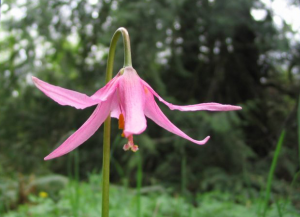
News/Reports
San Juan River Estuary ER #141 Overview, Biological and Physical
ORIGINAL PURPOSE :To conserve a representative sample of the lower alluvial forest
communities on the San Juan River floodplain. Also to protect the redlisted tooth-leaved monkey-flower, endemic to British Columbia.
CURRENT PURPOSE: To serve as a benchmark for forest research and to protect early seral
floodplain plant communities.
See the complete PDF:San Juan River ER 141
Access:The southern segment of this reserve is accessible through Port
Renfrew by following Deering Road off Parkinson Road. From
there, Island Road traverses through the western boundary of the
reserve. The northern segment of the reserve is accessible by a <1
km hike south from Pacific Marine Road.
Physical: The San Juan River splits into several distributaries that drain into Port San Juan.
The reserve is segmented into two parts: one lies along the north bank of the
most northerly segment of the San Juan River, while the other protects flood
plains to the south-west, and is bordered by the most southerly distributary
channel of the San Juan River. The second segment of the reserve is larger and
encompasses six distributaries.
The reserve area is comprised of a flat alluvial flood plain, gravel bars, sloughs
and flood channels of the San Juan River and a steep rocky ridge rising to 80m
above sea level.
Biological: Cover vegetation is a 50-70 year old deciduous forest of alder, cottonwood and a
few clumps of young forests on a ridge. Rare species on this site include: angled bitter-cress, Smith’s fairybells, tooth-leaved monkey-flower, paintbrush owlclover, nodding semaphoregrass and pink fawn lilies.
Black cottonwood – red alder- salmonberry- piggy-back plant, and red alderstink currant – salmonberry- lady fern communities can be found on young alluvial sand and silt deposits that are subject to frequent flooding. A Sitka spruce – red alder – fern community has been observed in a small area only on older alluvial sand and gravel deposits that rarely flood. On the steep terrain, hallow till and colluvium cover schist bedrock and substrate a western hemlock –deer fern – community.
American Black Bears are present in the area.
moss sp. (Plagiothecium undulatum)
owl-clover, paintbrush (Castilleja ambigua ssp. ambigua)
piggy-back plant (Tolmiea menziesii)
salmonberry (Rubus spectabilis)
semaphoregrass, nodding (Pleuropogon refractus)
spruce, Sitka (Picea sitchensis )
Fauna
Bear, American Black (Ursus americanus)
Eagle, Bald (Haliaeetus leucocephalus)
Elk, Roosevelt (Cervus canadensis rooseveltii)
Mink, American (Neovison vison)
Otter, Northern American River (Lontra canadensis)

